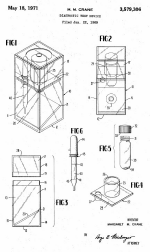Okay, so it isn’t exactly a pregnancy test – but it’s the EXACT SAME TECHNOLOGY. Rapid diagnostic tests have been used in the fertility / pregnancy industry commercially since Margaret Crane invented what eventually came to be known as the early pregnancy test (e.p.t.) in 1976. That’s the version you are picturing in your head right now.
These Rapid Diagnostic Tests, or RDTs, revolutionized the point-of-care testing (POCT) market for starting families. Patient costs went down, wait time was reduced significantly, and a new industry was born: At-Home Testing.
Fast-forward forty years, there are a handful of choices for pregnancy RDTs. Even fertility tests have several major players. These tests work in exactly the same way but target a different chemical (luteinizing hormone, or LH), and are used to predict when a woman is ovulating thereby giving her the best chance to get pregnant. They measure, or “quantify,” (with the aid of a piece of hardware similar to a large pen cap) what’s called an LH surge.
Today these RDTs literally target thousands of chemicals. Pharma companies are scrambling to find the most lucrative chemicals to target while attempting to reduce costs of the reading hardware for the relatively cheap RDTs (can be as little as 25¢ each). Some of these reading devices even have Bluetooth to communicate with the user’s phone app.
At Mobalysis® we’ve been working on bridging the gap for this problem with a technique called Computer Vision, which combines image / video recognition and artificial intelligence. We’ve designed proprietary algorithms that first recognize the presence of a strip in front of a webcam or smartphone (above), then quantify the test’s banding (above - two pink lines on the side panel). Notice the low percent error between the two results. Most other research companies working on RDT quantification try to solve their error problems by creating an even more expensive hardware adapter to control the lighting environment.
High performance liquid chromatographer can cost $30K USD used. (Jascobrasil, Wikimedia Commons)
Among other applications, we’ve decided to apply our tech to the legalization, and soon regulation, of medical and recreational marijuana. Once the Feds and State governments get everything sorted out, the FDA, DEA, or ATF is going to want to regulate this industry. Coming from a highly regulated pharmaceutical industry, we’ve got a leg up on what they’ll be looking for. There are already tons of analytical testing labs popping up all across Colorado (where Mobalysis® is based) that are specializing in testing "grows" for the legal medical and recreational cannabis industries. These labs use conventional testing methods like High Performance Liquid Chromatography (HPLC) and traditional microbiological techniques like Total Yeast / Mold Plate Counting (TYMC). An analytical lab with conventional methodology, even in an industry on the cusp of regulation, is very costly. Just one used HPLC costs approximately $30K USD.
Rapid tests have other applications too. Companies now make tests for cancer, HIV, illegal drugs, cholesterol, Zika, and thousands more.
Who knows, maybe we’ll be testing for things like cancer in our own homes soon as well. All this begun by a 26-year-old freelance graphic designer working at a pharma company in West Orange, New Jersey in 1968.■
Mobalysis is an image recognition technology company. For investor inquiries visit our Contact Page.




